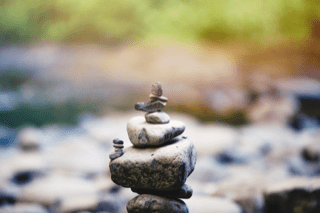
Changing the World
Added on 30 June 2019
“Everyone thinks of changing the world, but no one thinks of changing him or her self.”
adapted from words of Leo Tolstoy
When I first saw this I thought Tolstoy and the person quoting him meant that we shouldn’t be thinking about changing the world or other people because it’s not them that’s the problem, it’s us. In the context that I saw this quote (a report on an unhealthy organisational culture) I do think that it was used with a hefty sprinkling of ‘people in glass houses shouldn’t throw stones’ flavouring the mix.
What I think this quote really means though (of course!) is that change in the world around us can only come about, indeed is only seen, when we have thought about and done the work to change ourselves. Then we start to see ourselves and our connections in the world quite differently. It is increasingly clear to me is that unless we get to know ourselves more intimately we cannot hope to be closer to others and to our planet.
We get to know ourselves and tap into that inner source of wisdom by becoming our whole selves. This means a journey of integrating mind, body and spirit and the consequent self discovery that arises. The pathway on that journey is through the cultivation of a regular practice of reflection, contemplation or meditation to bring about a feeling of embodied wholeness. You can start this journey physically through yoga, somatic movement or other mindful activity. This is where I started, physical activity being my preferred way to ‘get out of’ my head and inhabit my body – before I realised that actually what I needed to do what integrate the two!
Philip Shepherd said “If you are divided from your body you are also divided from the body of the world, which then appears to be other than you or separate from you, rather than the living continuum to which you belong.”
So my yoga practice is foremost, a somatic practice to arrive fully embodied into the present moment, to cultivate awareness and to generate a process of inquiry into how consciousness inhabits the living body. It allows me to reclaim embodied ways of knowing whereby my felt experience becomes a source of wisdom and information from where I can notice what’s arising and most importantly make a choice about how or indeed whether I respond, breaking free of patterns embedded in my physical body.
Of course you don’t have to have athletic tendencies for this journey. You can start with the mind and from the ‘head’, where Philip Shepherd (The Embodiment Manifesto) says our culture is based, with some in depth personal inquiry coupled with meditation that helps you to steady the mind to better feel that connection with your body. I have certainly found that as I’ve become more able to feel the wholeness of my embodied self I’ve begun to rely less on the physical route there. Sometimes of course only a full on sweaty physical activity will do, but I’m now more able to recognise when it’s important to reach my whole integrated self through sitting silently with my breath, feeling into every cell of my body with love and patience and allowing my mind to settle, trickling down from my head to the core of my very being.
As with many journeys the route isn’t direct and many obstacles will be encountered on the way. Everyone can choose to travel by their own path, none is better than any other. When you know this place of stillness and the embodied self you have the opportunity to take it with you wherever you go and to being it to everything you do and everywhere you go. Thich Nhat Hahn writes of washing a teapot “with the kind of attention I would have were I giving the baby Buddha or Jesus a bath. Bring this attention to everything you do; bring your whole self to your life then your life becomes the journey.